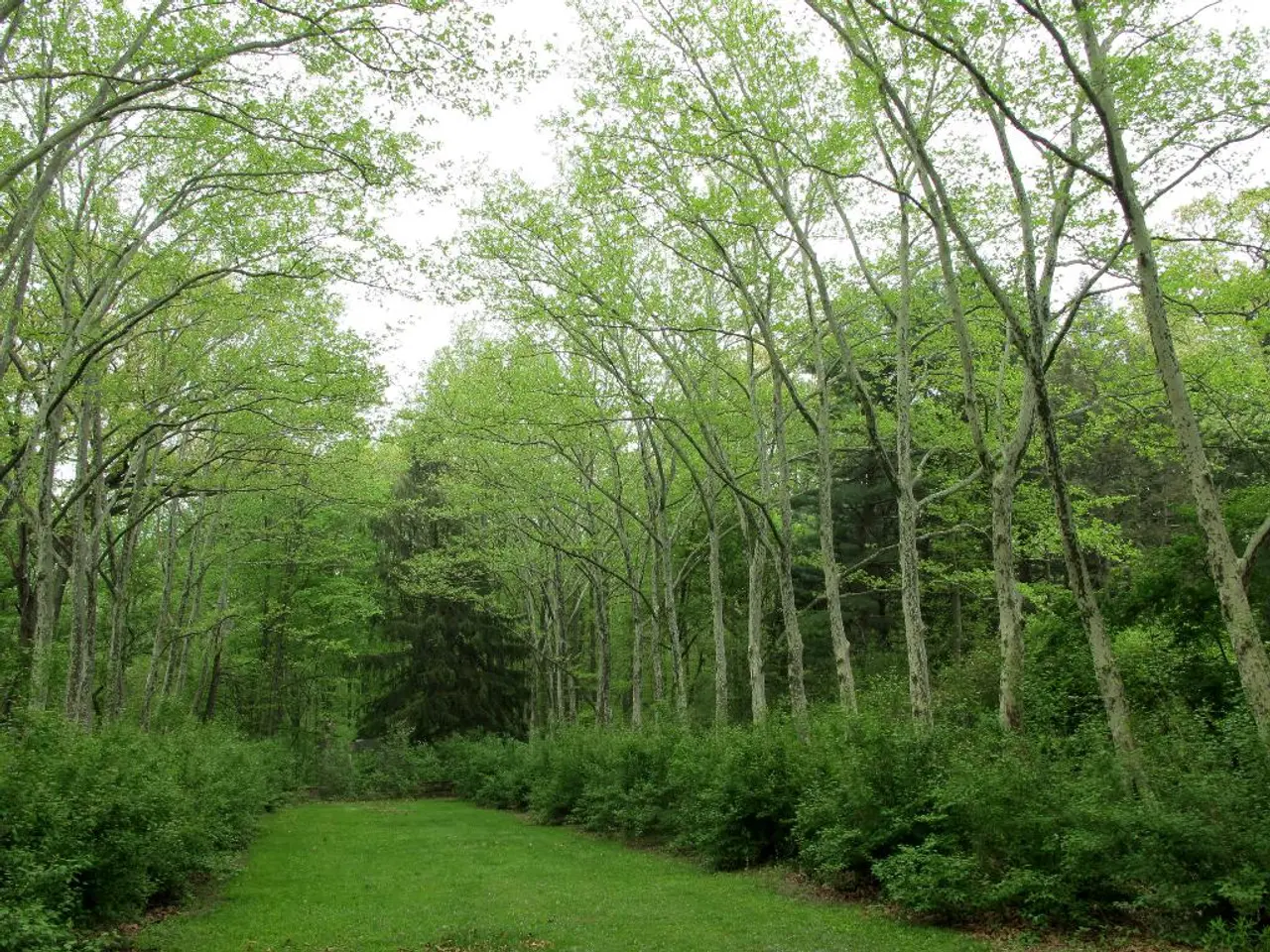Enhance Your Wildlife Garden's Eco-Credibility with 8 Green Certifications
Transforming Your Yard into a Certified Wildlife Habitat
Are you passionate about wildlife and the environment? Consider transforming your yard, school, or community area into a Certified Wildlife Habitat. Here's a step-by-step guide to getting started.
First, enroll in a certification program, often through an online application or quiz to assess your eligibility. Programs like those run by the National Wildlife Federation (NWF) are readily available [2]. A trained technician or volunteer may then visit your property to assess the current conditions, identify invasive species to remove, and recommend native plants or other improvements [2].
To meet the habitat standards, your site must provide adequate food sources (native plants that support local wildlife), accessible water, natural or planted cover, and safe breeding areas for animals [1][3]. Sustainable gardening practices, such as avoiding pesticides and maintaining natural landscaping, are also essential [1][5].
For community wildlife habitat certification, there is a requirement to have a certain number of certified homes, schools, and common areas, as well as achieve community outreach and education goals like workshops and events [1].
The benefits of obtaining a Certified Wildlife Habitat are numerous. You'll receive a personalized certificate naming your habitat and listing you as a certified wildlife steward [3]. Certification often comes with a membership to organizations like the NWF, including subscriptions to relevant magazines and newsletters for ongoing education [3].
Certified habitats contribute to larger networks of wildlife corridors that support biodiversity, especially important in urban and suburban areas where natural habitats are fragmented [4]. Being certified provides an opportunity to educate neighbors and promote conservation through your example, inspiring wider habitat creation and community engagement [1][4][5].
Certification programs connect participants to local native plant societies, conservation organizations, and community resources for continued support and sustainable gardening advice [5]. Certification fees may apply, such as the $20 application fee charged by the NWF to process certification [3].
There are various certification programs available, including Monarch Watch's Monarch Waystation certification for gardens that provide resources for monarch butterflies, the Backyard Habitat Certification Program for residential landscapes, and the National Garden Club's Certified Wildlife Habitat program for sustainable landscapes [1].
In summary, becoming a Certified Wildlife Habitat involves meeting key habitat criteria centered on supporting local wildlife needs through native plants and sustainable practices, followed by a formal certification process administered by organizations like the National Wildlife Federation. The benefits extend beyond personal satisfaction to include environmental contribution, education, and community recognition [1][2][3][4][5].
- To maintain a sustainable lifestyle at home and garden, consider following the steps to transform the space into a Certified Wildlife Habitat, as it involves growing native plants to support local wildlife, maintaining safe breeding areas, and adhering to sustainable gardening practices.
- By becoming a Certified Wildlife Habitat, you not only contribute to larger networks of wildlife corridors and support biodiversity, but also receive opportunities for ongoing education via membership to organizations like the National Wildlife Federation and access to local native plant societies and conservation organizations.



